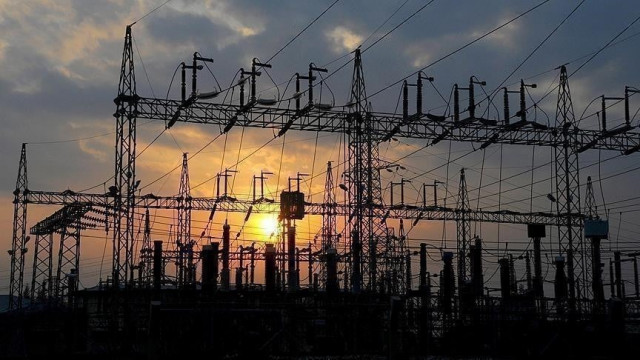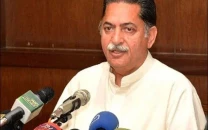Climate financing opportunities needs to be matched with innovative solutions
Climate financing options may need to be explored for electrical transmission, distribution system of Pakistan

The Government of Pakistan (GoP) has taken several initiatives for reducing greenhouse gas (GHG) emissions and is striving to shift towards 60% renewable energy and 30% electric vehicles by 2030. This will not only help Pakistan mitigate climate-induced vulnerabilities but also will open avenues to attract green investments like Water and Power Development Authority (WAPDA) launched the country’s first-ever green bonds in May last year and successfully raised $500 million from the international market for its Hydropower Project(s).
Climate Financing options may need to be explored for the Electrical Power Transmission and Distribution System of Pakistan with the use of efficient overhead line (OHL) conductors, which can reduce GHG emissions significantly, as compared to conventional OHL conductors currently being used in Pakistan. Efficient OHL conductors not only reduce GHG emissions but also could save huge amounts to the national exchequer in terms of saving in transmission line losses. In addition, this would also provide an opportunity to utilities for generating additional revenues by transmitting almost double the power through the same structures (towers), the same right of way and corridors.
Efficient OHL conductors provide multiple benefits under various conditions and as per requirements by utilities. Capacity enhancement of existing overloaded transmission lines in densely populated areas by replacing the existing conventional OHL conductors is just another advantage. With the increase in the population of major metropolitan areas, not only we are seeing an increase in electricity demand, but it is also getting progressively difficult for distribution companies to lay down new transmission and distribution lines. This is primarily because it has become extremely challenging to install new transmission lines, owing to congestion in populated areas. The only viable solution to work through this situation is to increase the transmission capacity of existing transmission lines
The above benefits can be achieved by using tried and tested technology across the world, which is also available in Pakistan since 2017. Efficient and proven conductor technologies are in place around the globe, under the umbrella of high-temperature low sag (HTLS) conductor. This can double the transmission capacity of existing transmission lines using the same structure and thereby debottlenecking the transmission and distribution network which is plagued by congested and overloaded lines. By some accounts, one such solution known as ACCC® that uses US patented technology, has been successfully rolled out in 250+ countries with 120,000 kilometers installed and in operational. Emerging markets that face similar grid-related issues to Pakistan, such as China, India, Indonesia, Nepal, Bangladesh etc. have been quick to adopt the technology immediately realizing its benefits and saving billions of dollars by reducing line losses. However, Pakistan,continues to suffer owing to the relevant authorities hesitance and bureaucratic approach toward adopting new technology.
ACCC Conductors are an efficient and proven solution that substantially reduce CO2 emissions associated with line losses. The International Energy Agency reports in the “Global Energy & CO2 Status Report of March 2019”, that the average CO2 emissions created from all combined sources of generation is 475 grams per kWh, the ACCC Conductor is currently reducing CO2 emission by over 2.6 million metric tons per year. The cumulative CO2 reductions saved via the use of ACCC Conductor exceeds 12 million metric tons.
SCS Global Services (SCS), an international leader in third-party certification, validation, and verification for environmental, sustainability, and food safety and quality performance claims, conducted an assessment to compare the line losses and CO2 emissions associated with ACCC Conductors and conventional conductors. Based on SCS’s findings, the ACCC technology in lieu of conventional conductors will reduce line losses and associated CO2 emissions by 27-31%. Although the actual CO2 benefit will vary on a project-by-project basis, installation of ACCC Technology clearly provides a way to reduce CO2 emissions from transmission line losses, while full utilization of existing ROWs is an added advantage.
The global financing/donor agencies such as World Bank (WB), Asian Development Bank (ADB) etc., are providing concessional financing arrangements for projects with reduced GHG emissions, hence using efficient conductors like ACCC would provide opportunities to GoP to capture climate financing for transmission and distribution line projects, which are currently being financed at much higher rates.
Issues Faced for Adaption of Innovative Technology, which are required to be highlighted:
HTLS category efficient conductor is already in place in Pakistan and three projects are completed using ACCC conductors (US based HTLS Conductor) and local manufacturing industry (Pakistan Cables Limited) have also established the facility for production of efficient conductors (ACCC).
Despite of all the benefits that can be obtained using efficient conductors in the transmission and distribution system, the dilemma of the overall Public Procurement Process in Pakistan is Low Price Syndrome that forces public sector organizations to opt for low-priced technologies thereby ignoring the benefits over the life cycle of the efficient products with higher capital cost. Opting for the cheaper option totally ignores the Value for Money of a product after its installation in the system. It is imperative to align our public procurement process to give way to much needed new technologies in Pakistan as world in general and our region, in particular, is quickly shifting to these new technologies to meet their electricity demand.
Lack of Research & Development (R&D) in our public sector organizations is another major difficulty in the adaptation of innovative technologies. Selection of efficient technologies on the basis of their benefits to the system can only be encouraged through proper R&D by utilities. Currently this task is being done voluntarily by industry itself, but utilities are still reluctant to accept the same without their internal R&D.



















COMMENTS
Comments are moderated and generally will be posted if they are on-topic and not abusive.
For more information, please see our Comments FAQ